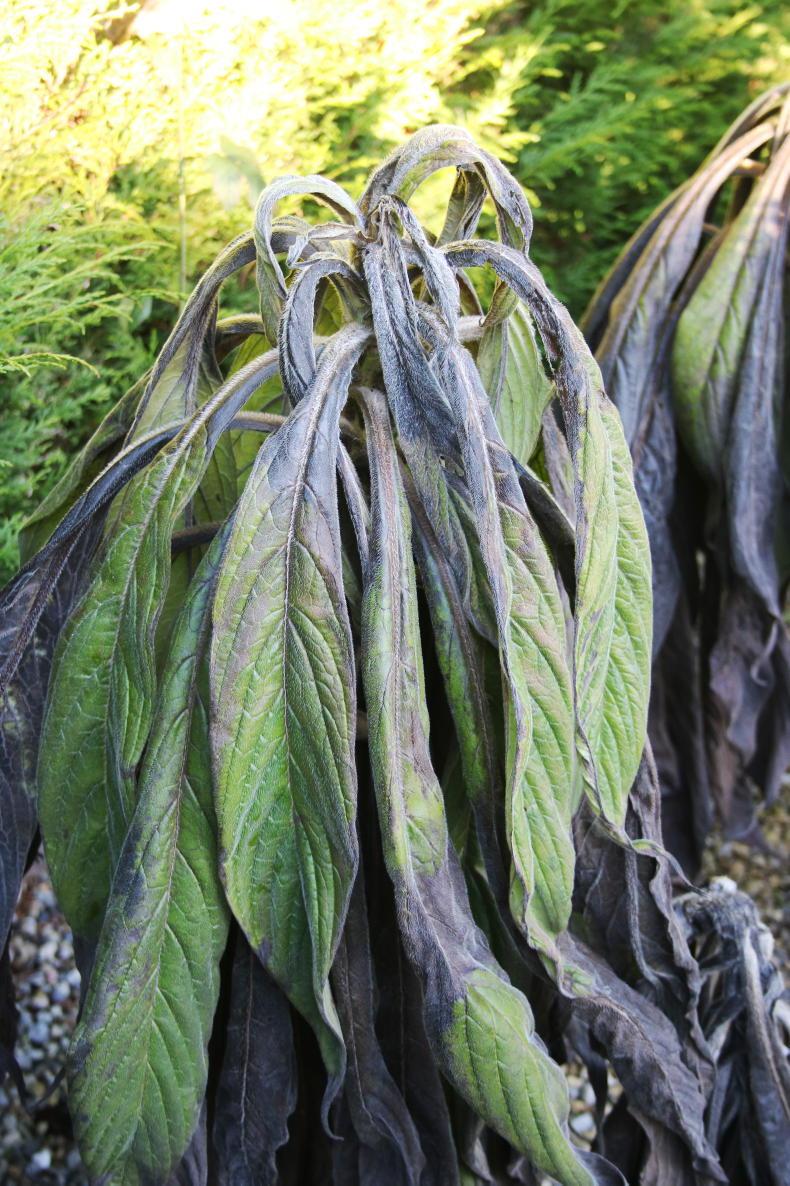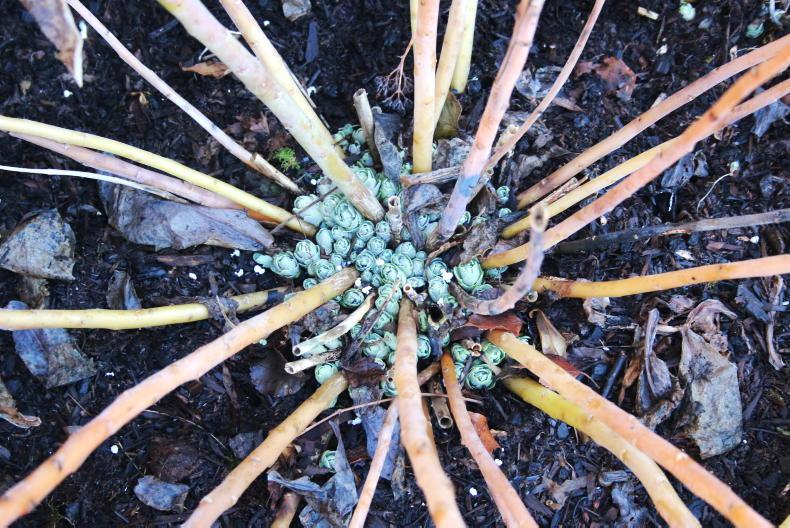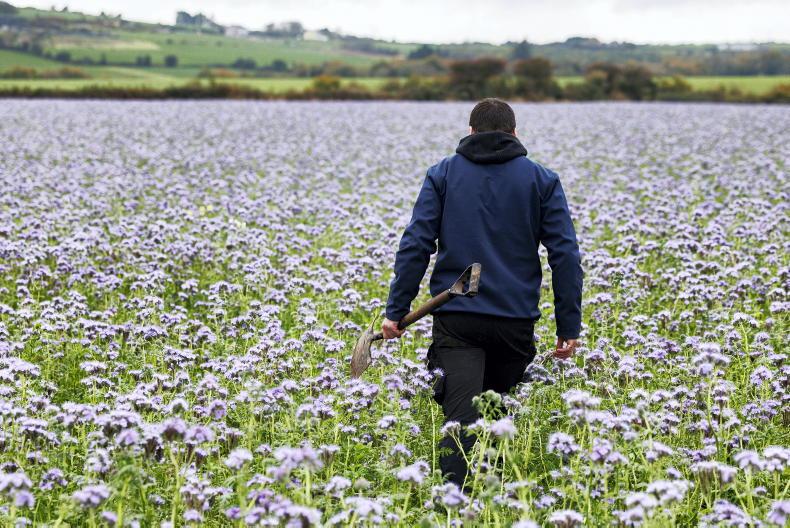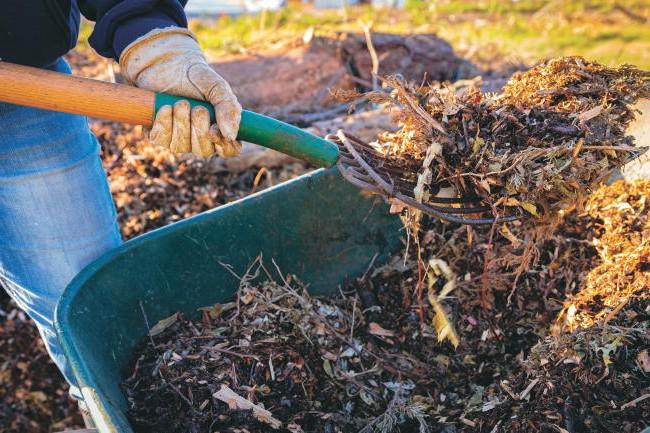Even after almost 30 years together, my husband still surprises me. Like at Christmas, when he clocked up a gold star for possibly one of my best presents ever from him.
Although potentially a risk on his part, he gets me, and on Christmas morning I opened an intriguingly small, neatly wrapped package to reveal my new favourite gardening tool – a mini chainsaw.
We have a lot of trees and shrubs and a small woodland area on our property and many gardening hours, especially during January, are spent thinning, pruning and coppicing.
A standard chainsaw is too heavy for me and my contribution to this work has, until now, been limited to whatever can be easily cut with loppers and a manual pruning saw.
Cutting branches that are any more than 2cm in diameter with a pruning saw is laborious and slow and even a few hours of this type of work has often left me with painful arm strain.
However, my new mini chainsaw is a delight to use and makes for fast and easy pruning of branches too thick for pruning shears.
The cutting bar length is 10cm and the saw can effortlessly cut through branches up to 8cm thick in just seconds.
It is battery-operated and I’m getting at least six hours of use from a single charge.
The extremely lightweight design means I can hold it with one hand and, at just over 30cm in total length, it is so easy to manoeuvre.
Of course, like any chainsaw, it is still a potentially hazardous device and should be handled and used with great care. It also looks a bit like a toy so, if you venture to purchase one, make sure to keep it out of reach of children or just hide the detachable battery separately.
One of my first gardening outings of the year will be to the annual Snowdrop Gala and Other Spring Treasures in Carlow on Saturday 4 February and I am really looking forward to a good day out with a few gardening friends.

Snowdrop season: Spring snowflake, Leucojum vernum. \ Mary Keenan
Even though this popular event is now in its 11th year, last year was my first time to attend as outings like this eluded me during the years that my now-teenage-children were small.
The first half of the day will involve much-anticipated talks by guest speakers Iris Ney from Germany and Troy Scott Smith, head gardener at the renowned Sissinghurst Castle Garden in southeast England. These talks take place at Ballykealy House Hotel near Ballon.
After lunch, there is a guided tour of the snowdrop collection at Altamont Gardens and exclusive access for attendees to a specialist plant sale of rare and unusual bulbs and other spring-flowering plants.
Last year, I came away with some interesting snowdrops and a few wallet-damaging but irresistibly gorgeous hellebores.
Now, when it comes to the more unusual cultivars of snowdrops, I tend to blow hot and cold having had mixed success with them and, in truth, I cannot rank myself as a devoted galanthophile.
But this event is about more than just snowdrops and I found myself particularly enchanted by swathes of the lovely spring snowflake, Leucojum vernum, at Altamont Gardens. Its dangling blooms resemble old-fashioned lamp shades and make an eye-catching alternative to snowdrops. These pretty and robust bulbs grow to around 20cm tall and each of the six white petals is attractively tipped in green or yellow.
Needless to say, a few of these were among my purchases on the day as well.
Where there’s life,
there’s hope
The prolonged and severe frosts during December were nature’s reminder to me that pushing the boundaries of hardiness and attempting to grow more exotic and tender plants in our colder midlands garden always carries a risk of winter casualties.
The mostly milder winters of recent years have enabled us to ambitiously grow and successfully flower plants like the Canary Island’s native Echium pininana, popular in comparatively mild, coastal gardens around Ireland for its towering spires of bee-friendly, blue flowers.

Frost-damaged Echium pininana. \ Mary Keenan
Although we protected these and other tender plants with horticultural fleece throughout the cold spell, the soft, young growth, as pictured, has been scorched and damaged by frost, causing leaves to turn brown.
Sometimes frost damage is apparent almost immediately following freezing as evident with some of our more tender euphorbias and solanums where the leaves and stems blackened and collapsed overnight. With other plants, particularly woody ones, the damage may take several months to appear.
Foliage of certain evergreen plants that may appear water-soaked and dark-green after frost will, in time, turn black and drop.
However, do not automatically give up on a plant that has been frost damaged. Many plants can be surprisingly resilient and may well rejuvenate from dormant buds at or below soil level.
This takes time, so recovery may not be seen until early summer. The plan of action for frost-damaged plants is best summarised as wait, see, and water (if necessary).
Prune wisteria, shortening sideshoots to around 8-10cm from the main stem, leaving two or three buds.Order seeds, summer bulbs and young plants.Take mowers for an annual service.Clear borders and rake up any remaining fallen leaves before bulbs start poking through. Spread a 7-10cm deep layer of compost or mulch over borders to help suppress weed growth and aid soil moisture retention in summer.Timely reminder: cut back herbaceous perennials

Cutting back perennials. \ Mary Keenan
In spring, new growth arises from the base of herbaceous plants, including grasses, that die back to ground level over winter. Start cutting back the old growth from grasses and other perennials like this sedum ‘Autumn Joy’ whose seed heads were left standing for winter interest. Use secateurs to cut stems close to the ‘crown’ or dormant top of the plant, taking care to avoid damaging new shoot growth. If the soil is too wet to access plants without compacting soggy soil, wait until conditions are drier rather than harming the soil.
Saturday 4 February: Snowdrop Gala and Other Spring Treasures, Ballykealy Manor hotel and Altamont Gardens, Co Carlow. Tickets €100 (including teas and lunch) available from Robert Miller, Altamont Plant Sales T:087 9822135 or Hester Forde T:086 8654972.Visit gardens such as the National Botanic Gardens Glasnevin in Dublin, Mount Congreve Gardens in Waterford and National Botanic Gardens Kilmacurragh in Co Wicklow for inspiration on plants that might flower or look good in your garden. Mary Keenan and Ross Doyle run Gash Gardens, Co Laois, open to the public. www.gashgardens.ie
Even after almost 30 years together, my husband still surprises me. Like at Christmas, when he clocked up a gold star for possibly one of my best presents ever from him.
Although potentially a risk on his part, he gets me, and on Christmas morning I opened an intriguingly small, neatly wrapped package to reveal my new favourite gardening tool – a mini chainsaw.
We have a lot of trees and shrubs and a small woodland area on our property and many gardening hours, especially during January, are spent thinning, pruning and coppicing.
A standard chainsaw is too heavy for me and my contribution to this work has, until now, been limited to whatever can be easily cut with loppers and a manual pruning saw.
Cutting branches that are any more than 2cm in diameter with a pruning saw is laborious and slow and even a few hours of this type of work has often left me with painful arm strain.
However, my new mini chainsaw is a delight to use and makes for fast and easy pruning of branches too thick for pruning shears.
The cutting bar length is 10cm and the saw can effortlessly cut through branches up to 8cm thick in just seconds.
It is battery-operated and I’m getting at least six hours of use from a single charge.
The extremely lightweight design means I can hold it with one hand and, at just over 30cm in total length, it is so easy to manoeuvre.
Of course, like any chainsaw, it is still a potentially hazardous device and should be handled and used with great care. It also looks a bit like a toy so, if you venture to purchase one, make sure to keep it out of reach of children or just hide the detachable battery separately.
One of my first gardening outings of the year will be to the annual Snowdrop Gala and Other Spring Treasures in Carlow on Saturday 4 February and I am really looking forward to a good day out with a few gardening friends.

Snowdrop season: Spring snowflake, Leucojum vernum. \ Mary Keenan
Even though this popular event is now in its 11th year, last year was my first time to attend as outings like this eluded me during the years that my now-teenage-children were small.
The first half of the day will involve much-anticipated talks by guest speakers Iris Ney from Germany and Troy Scott Smith, head gardener at the renowned Sissinghurst Castle Garden in southeast England. These talks take place at Ballykealy House Hotel near Ballon.
After lunch, there is a guided tour of the snowdrop collection at Altamont Gardens and exclusive access for attendees to a specialist plant sale of rare and unusual bulbs and other spring-flowering plants.
Last year, I came away with some interesting snowdrops and a few wallet-damaging but irresistibly gorgeous hellebores.
Now, when it comes to the more unusual cultivars of snowdrops, I tend to blow hot and cold having had mixed success with them and, in truth, I cannot rank myself as a devoted galanthophile.
But this event is about more than just snowdrops and I found myself particularly enchanted by swathes of the lovely spring snowflake, Leucojum vernum, at Altamont Gardens. Its dangling blooms resemble old-fashioned lamp shades and make an eye-catching alternative to snowdrops. These pretty and robust bulbs grow to around 20cm tall and each of the six white petals is attractively tipped in green or yellow.
Needless to say, a few of these were among my purchases on the day as well.
Where there’s life,
there’s hope
The prolonged and severe frosts during December were nature’s reminder to me that pushing the boundaries of hardiness and attempting to grow more exotic and tender plants in our colder midlands garden always carries a risk of winter casualties.
The mostly milder winters of recent years have enabled us to ambitiously grow and successfully flower plants like the Canary Island’s native Echium pininana, popular in comparatively mild, coastal gardens around Ireland for its towering spires of bee-friendly, blue flowers.

Frost-damaged Echium pininana. \ Mary Keenan
Although we protected these and other tender plants with horticultural fleece throughout the cold spell, the soft, young growth, as pictured, has been scorched and damaged by frost, causing leaves to turn brown.
Sometimes frost damage is apparent almost immediately following freezing as evident with some of our more tender euphorbias and solanums where the leaves and stems blackened and collapsed overnight. With other plants, particularly woody ones, the damage may take several months to appear.
Foliage of certain evergreen plants that may appear water-soaked and dark-green after frost will, in time, turn black and drop.
However, do not automatically give up on a plant that has been frost damaged. Many plants can be surprisingly resilient and may well rejuvenate from dormant buds at or below soil level.
This takes time, so recovery may not be seen until early summer. The plan of action for frost-damaged plants is best summarised as wait, see, and water (if necessary).
Prune wisteria, shortening sideshoots to around 8-10cm from the main stem, leaving two or three buds.Order seeds, summer bulbs and young plants.Take mowers for an annual service.Clear borders and rake up any remaining fallen leaves before bulbs start poking through. Spread a 7-10cm deep layer of compost or mulch over borders to help suppress weed growth and aid soil moisture retention in summer.Timely reminder: cut back herbaceous perennials

Cutting back perennials. \ Mary Keenan
In spring, new growth arises from the base of herbaceous plants, including grasses, that die back to ground level over winter. Start cutting back the old growth from grasses and other perennials like this sedum ‘Autumn Joy’ whose seed heads were left standing for winter interest. Use secateurs to cut stems close to the ‘crown’ or dormant top of the plant, taking care to avoid damaging new shoot growth. If the soil is too wet to access plants without compacting soggy soil, wait until conditions are drier rather than harming the soil.
Saturday 4 February: Snowdrop Gala and Other Spring Treasures, Ballykealy Manor hotel and Altamont Gardens, Co Carlow. Tickets €100 (including teas and lunch) available from Robert Miller, Altamont Plant Sales T:087 9822135 or Hester Forde T:086 8654972.Visit gardens such as the National Botanic Gardens Glasnevin in Dublin, Mount Congreve Gardens in Waterford and National Botanic Gardens Kilmacurragh in Co Wicklow for inspiration on plants that might flower or look good in your garden. Mary Keenan and Ross Doyle run Gash Gardens, Co Laois, open to the public. www.gashgardens.ie












SHARING OPTIONS